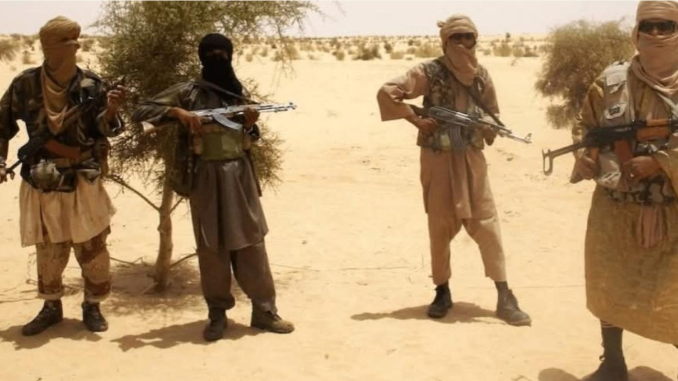
The Boko Haram terrorists launched a deadly and coordinated assault on Nigerian Army troops in Ngamdu, Borno State, deploying Rocket Propelled Grenades (RPGs), command-detonated Improvised Explosive Devices (IEDs), and armed drones.
The attack, according to a release on Saturday, targeted troops of Operation HADIN KAI under the 29 Task Force Brigade, tasked with combating insurgency in Nigeria’s volatile North-East.
The military spokesman, Lt Col Sani Uba, said the terrorists aimed to overrun military positions and destroy critical platforms using a combination of firepower and unconventional warfare tactics.
Despite the intensity of the ambush, Nigerian troops held their ground in what military officials described as a “fierce and successful defensive operation.”
However, the Army confirmed that four personnel were killed in action (KIA), and five others sustained injuries (WIA).
“The terrorists attempted to overwhelm our positions using RPGs, armed drones, and coordinated IED strikes, but our troops stood firm and responded with superior firepower,” said Uba, the Media Information Officer for the Joint Task Force North East, Operation HADIN KAI.
“Unfortunately, we lost four brave soldiers, and five others were wounded.”
According to the Army, the attackers also targeted military vehicles, damaging several Mine-Resistant Ambush Protected (MRAP) vehicles and Gun Trucks (GTs).
In an apparent bid to delay reinforcements and inflict further casualties, the insurgents planted multiple IEDs along the vital Ngamdu–Damaturu Main Supply Route (MSR), temporarily halting both military and civilian traffic.
Army engineers were quickly deployed to clear three IED-laden spots along the route. After successful clearance operations, the MSR was reopened to ensure the continued movement of troops and essential supplies.
“Security of our troops and the public remains a top priority,” said Lt. Col. Uba.
“Our engineering units acted swiftly to neutralise the threat and restore movement along the supply route. The area is now secure.”
Following the attack, troops received immediate logistical support, including ammunition and replacement tyres for damaged MRAPs, allowing them to maintain operational momentum in the theatre.
Intelligence gathered after the confrontation indicated that the insurgents suffered substantial losses. Credible sources confirmed that at least 15 bodies were seen being buried by Boko Haram fighters in pushcarts around Bula Wura, near Wasaram — a sign of the devastating impact of the military’s response.
To consolidate the gains and ensure Boko Haram fighters do not regroup, the 29 Task Force Brigade has launched aggressive fighting patrols and exploitation operations throughout the area. These efforts, military officials say, are aimed at “denying the terrorists freedom of action” and maintaining control over strategic points in the region.
The use of armed drones by Boko Haram marks a dangerous escalation in the insurgency, raising fresh concerns about the group’s growing sophistication and access to advanced technology.
Operation HADIN KAI was launched in 2021 as a revamped counterinsurgency operation to replace Operation LAFIYA DOLE. It aims to degrade Boko Haram and its splinter factions, including the Islamic State West Africa Province (ISWAP), which have been responsible for bombings, abductions, and attacks on civilians and security forces in the North-East.
Though significant territorial gains have been made by the Nigerian military in recent years, insurgent groups continue to launch asymmetric attacks, especially in remote communities and along strategic transport routes. See, More, Article, Here>>